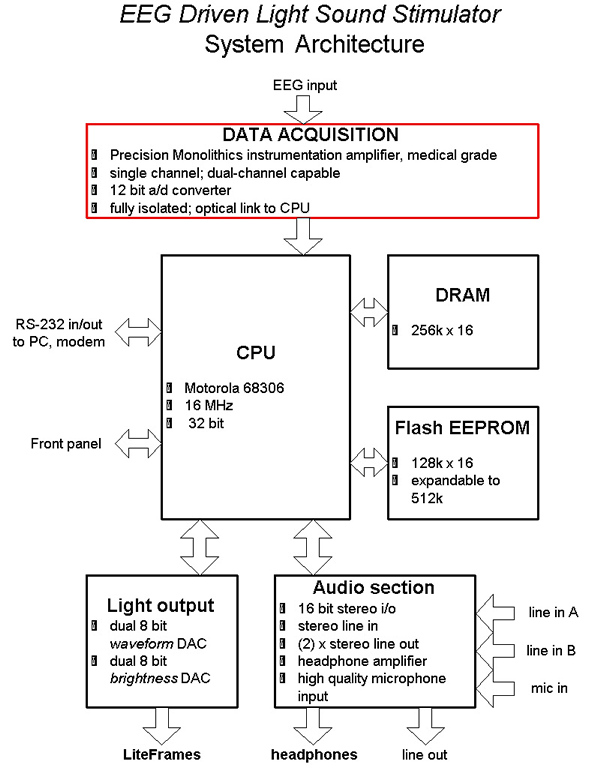The following diagram provides an overview of the EDLSS system we used in the Phase II SBIR grant studies; it extended and enhanced the earlier model used in the Phase I studies. While in operation the EDLSS executes a preprogrammed algorithm intended to produce specific forms of cortical activation.
This system analyzed the acquired EEG signal three times per second and dynamically updated the light sound stimulation patterns at that rate. This system can adapt itself to each user's brain and change as the resulting EEG changes over time.
 |
Notes
(1) The data acquisition section is fully isolated from the CPU section to prevent shock; it's powered by a 9-volt battery.
(2) If averaged FFT bin information is stored in the flash EEPROM, many sessions may be saved prior to transfer. Each session is automatically indexed in sequence for easy analysis.
(3) Both the brightness and waveform of the photic stimulation are programmable; the waveform via 256 x 8 table lookup.
(4) The audio section is especially robust, with two stereo line inputs (for CD, cassette), line output, headphone amp/output, and a high-quality microphone input amplifier.
(5) Most lower-cost EEG systems incorporate 8-bit converters; our 12-bit converters are much more sensitive.